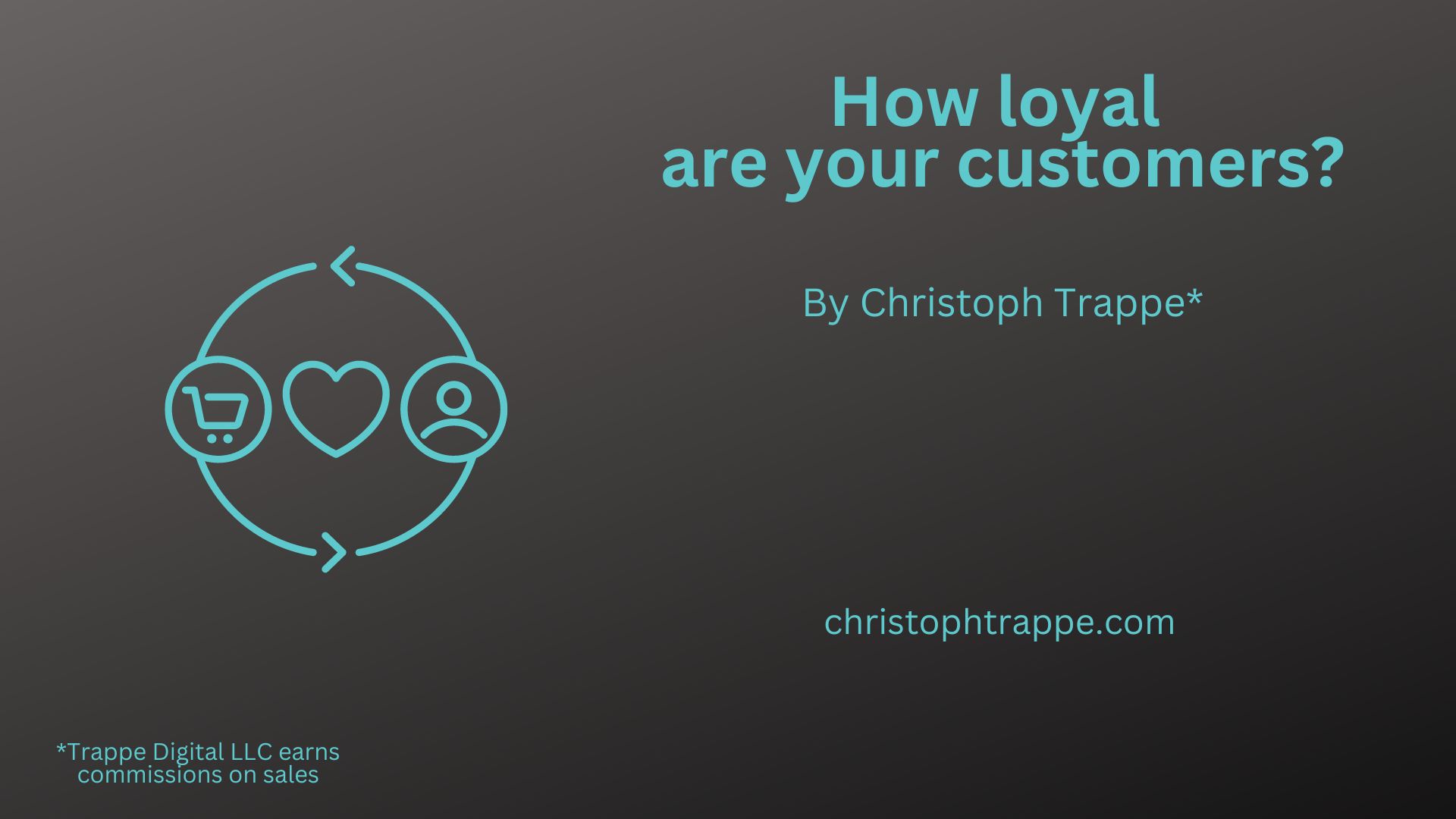Trappe Digital LLC may earn commission from product clicks and purchases. Rest assured, opinions are mine or of the article’s author.
Loyalty programs in marketing (including for customers) can be highly beneficial to companies and consumers, which makes them a great strategy in my book. Everyone – the business and the consumers – wins or can win. And loyalty is harder and harder to get, as Rebecca Brooks discusses in her book on how customers make shopping decisions.
Probably most known are airline loyalty programs, which have offered free flights and later other things, including merchandise, in return for repeat business. The coffee punch cards are another example. Get a free coffee after buying 10. But can every company run a loyalty program? Every is a strong word, but there’s probably more than do today. I mean, even my gas station now has a sophisticated program.
Read next: What turns a repeat customer into a loyal customer?
In this article, I discuss:
- What are loyalty programs?
- How can loyalty programs work best?
- Why do consumers use them?
- Biggest advantages for businesses
- What companies could run loyalty programs?
What are loyalty programs?
At the most basic level, loyalty programs help companies build relationships with consumers by rewarding them for buying behavior. For example, in the Casey’s loyalty program, I earn points every time I buy fuel or other items at the convenience store chain.

I can then redeem those points for cheaper fuel or for dollars off inside the store.
How can loyalty programs work best?
Loyalty programs work best when consumers see the value in their rewards. For example, I remember an online discussion a few years ago where somebody said: “Why would you pay more if you get a free toaster?” And that isn’t an untrue point at all. There’s a balance. Spending $45 at a store you weren’t going to spend to save 4 cents a gallon isn’t a good deal. But buying what you need anyway and getting those 4 cents off makes sense for the consumer. And that reward may have been the deciding factor why one store was picked over another.
On airlines loyalty programs, frequent fliers also get other benefits:
- Complimentary upgrades
- Cheaper hotel rooms when using miles
- etc.
Just the upgrades can add up.
In the Walgreens loyalty program, shoppers get a bundle off on all kinds of items. It’s really the same model, except it’s a food purchase and not a bigger seat on an airplane.
Loyalty programs also need to be easy to use. The more we have to jump through hoops, the less likely it is that we’ll participate.
In the Casey’s program, you type in your phone number at the point-of-sales terminal and everything works together. If you have a reward coming for the Monster can in front of you, it’ll just be taken off the total. When I had free pizza slices as a reward, it would ring it up as zero dollars. Super convenient and works easily. That’s key.
Read next: Rebranding is hard. An update on the Bonvoy rebrand
Why do consumers use them?
I mean, who doesn’t like getting stuff for free? And loyalty program rewards are basically that – free things. For example, after all the flying I’ve done over the years, we’ve used plenty of the miles accumulated for free vacations.
Biggest advantages for businesses
The biggest advantage certainly can be that it drives revenue. If the rewards and potential for rewards are big enough, consumers will pick your brand over the competition. I’ve bypassed one gas station to stop at the next Casey’s because of the rewards program, for example.
Revenue is one advantage. Another is consumer intelligence. Loyalty programs know what I buy, when I buy it, what I spend and more. They know a lot about me. The price for getting points is the cost of the purchase but also my data. Brands know me better.
That information can certainly be analyzed as a whole for the consumer base as well as for me on a personal level. Then, when done well, it can be used to market to me and get me to buy more stuff.
What companies could run loyalty programs?
The sky is the limit, as they say. Now, it’s unlikely that every single business on the planet can start a loyalty program. But, there is probably an opportunity for more businesses than we might realize. Just take our discussion on subscription businesses, for example. There were a ton of opportunities there that aren’t necessarily clear-cut and apparent from the get-go.
The same can be said here. Think about:
- What actions do we want our consumers or users to take? Which of these helps us succeed as a business?
- How can we incentivize them?
- Which way would we implement this?
I think of loyalty programs traditionally being more B2C than B2B, but even airlines have loyalty programs for B2C and B2B. They let companies earn points and offer other rewards for employees flying them.
That certainly can be applied in some instances to other businesses as well.

